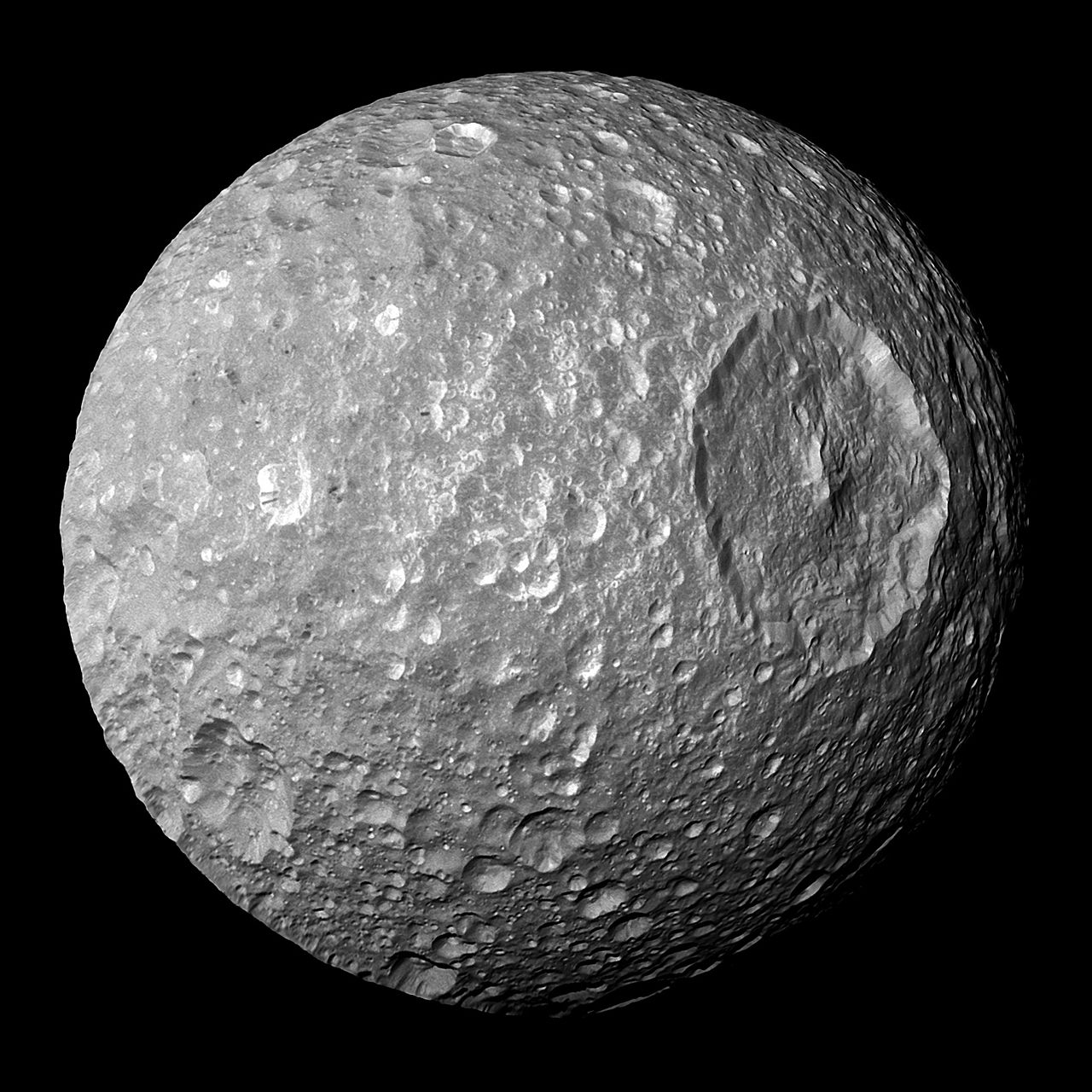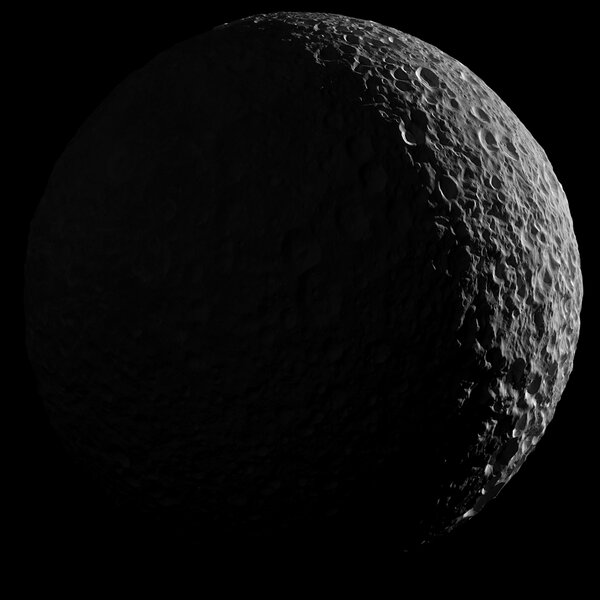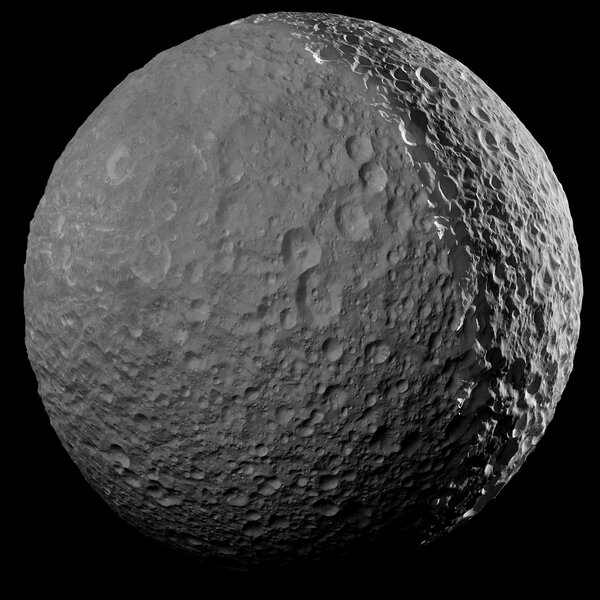Create a free profile to get unlimited access to exclusive videos, sweepstakes, and more!
Goodbye, Mimas, and thanks for all the Star Wars jokes

On January 30, 2017, the Saturn-orbiting Cassini spacecraft made its final close pass of the icy moon Mimas. Closing in to just 41,230 kilometers from the tiny world, it took this fantastic and moody shot:
Oh, my. Look at how battered it is! Every square centimeter of the surface is covered in craters. It’s saturated with them, meaning that any new impact would probably erase more craters than it makes. This also means the surface is very old; unlike Earth, where continental drift, volcanoes and other geological processes change the surface on a scale of decades or centuries, Mimas has a surface that has been static for perhaps billions of years! The only changes have been asteroids and comets smacking into it, digging those craters.
In this image (actually a mosaic of 10 smaller frames) the Sun is off more or less to the right and behind Mimas, lighting up that side of the moon, so we see a crescent. But, when this shot was taken, Saturn was more or less to the left and behind Cassini. If you were standing on the “dark” portion of Mimas at this time, Saturn would’ve been huge and bright in the sky. Bright enough, in fact, to light the landscape, much as the full Moon can be bright enough to read by here on Earth. In this image, though, the contrast is set such that you can’t see it.
So, the Cassini imaging scientists took those darker parts of the mosaic and enhanced the contrast. What they got was this:
Whoa. Like I said, it’s saturated with craters. Yikes. What a history this moon has had! The two big conjoined craters in the middle are Gwynevere (bottom) and Lancelot (top) — most features on Mimas are named after characters and places in Arthurian legend. The long, dark lines you see are chasms; probably cracks generated from the impact that carved out the crater Herschel. Oh, right. You can’t see Herschel in this image. That’s actually rather funny, because Herschel is the most obvious feature on Mimas, and why the moon is such an Internet darling. See for yourself, in this older Cassini shot:
Ha! That’s no moon...except it is.
Herschel (named after astronomer William Herschel, who discovered Mimas in 1789) is so big that if whatever object made it had been much bigger, or moving much faster, it would’ve shattered the moon. As it was, it just left a whopping, ridiculously huge crater.
Mimas is, on average, just a hair under 400 kilometers across. It’s pretty low density (about 1.15 times the density of water), so it’s probably mostly water ice with some rock as well. Interestingly, it’s about the smallest object you can have that still has enough gravity to form itself into a sphere. Gravity tends to make really big deviations (like mountains and valleys) collapse over time, so you get a sphere; that’s why big objects are balls. Deviations from sphericity tend to smooth out.
What’s neat is that, even though you can’t really tell from this image, Mimas is decidedly egg-shaped, a flattened ovoid. Saturn’s gravity pulls it into that shape due to tides. It’s 415 km through the long axis pointing toward Saturn, and the other two axes are 393 x 381 km.
Obviously, there’s a lot going on with this pummeled world. Unfortunately, this is the last time we’ll see it close up from Cassini. The spacecraft’s mission ends on September 30, 2017, and these images were from the final close pass in January. After this, Cassini will never get closer to Mimas than 80,000 km.
But there’s much work to be done! As my friend Jonathan McDowell notes we’ll get a close pass of the flying-saucer moon Atlas on April 17, and that’ll be amazing. And there are still many other moons to see, and close up shots of the rings, and of course the final plunge into Saturn’s atmosphere, the last gasp of this fantastic mission. Even then it will be a noble end, sending back data right up until the last.
It’s been an amazing adventure, these past 13 years, and there’s still a few more months to go. Let’s see what Cassini’s still got.





























